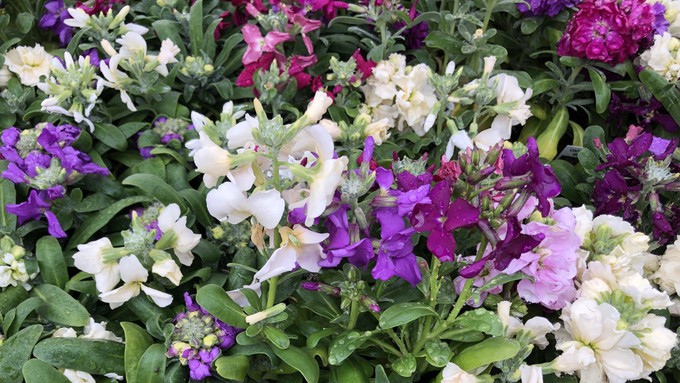
Expect spring to get off to a soggy start, weather service says

Spring flowers, like these fragrant stock blooms, are ready to bright up landscapes, but the sun we've enjoyed the past few days will be crowded out by clouds soon. Kathy Morrison
So far, 2023 has definitely been wet – and our rainy days aren’t over. It looks like we’ll be starting spring with more showers.
“The latest 6-10 Day Precipitation Outlook is still leaning toward above-normal precipitation for NorCal next week,” tweeted the Sacramento office of the National Weather Service on Thursday. “A strong system will bring widespread precipitation early to mid next week, followed by unsettled weather towards the end of next week.”
Before this next round of rain arrives, the last Saturday of winter will feel very much like spring with highs close to 70 degrees. That warmth will prompt rapid growth and many more spring flowers. Any daffodils, tulips or other bulbs held back by chilly temperatures will soon be bursting into bloom.
Warmer temperatures also bring out mosquitoes. Make sure to dump rainwater out of any place it may have collected – flowerpots, old tires, kids’ toys, etc. Invasive mosquitoes can breed in a bottle cap with a tablespoon of water.
During this little gap in storms, it’s a good time to access our precipitation totals – and your own landscape’s ability to cope with all this moisture.
This winter, California has already experienced 11 “atmospheric rivers” – a weather term that’s become all too familiar.
Almost halfway through our “water year” that started Oct. 1, Sacramento has received 23.76 inches of rain; that’s 6 inches more than we average (17.6 inches) in a whole water year.
So far in March, Sacramento has recorded 2.98 inches – almost double the average for those 16 days. That made up for a slightly below-par February that totaled 2.56 inches.
Leave the sprinklers off for at least another week; your lawn and landscape won’t need it. According to the weather service, Sacramento can expect another 1 inch to 1-1/2 inches this week, with the first showers starting as soon as Sunday afternoon. Monday is the first day of spring.
For the latest forecast: https://www.weather.gov/sto/#.
Comments
0 comments have been posted.Sacramento Digs Gardening to your inbox.
Sites We Like
Garden Checklist for week of July 21
Your garden needs you!
* Keep your vegetable garden watered, mulched and weeded. Water before 8 a.m. to reduce the chance of fungal infection and to conserve moisture.
* Feed vegetable plants bone meal, rock phosphate or other fertilizers high in phosphate to stimulate more blooms and fruiting. (But wait until daily high temperatures drop out of the 100s.)
* Don’t let tomatoes wilt or dry out completely. Give tomatoes a deep watering two to three times a week.
* Harvest vegetables promptly to encourage plants to produce more. Squash especially tends to grow rapidly in hot weather. Keep an eye on zucchini.
* Pinch back chrysanthemums for bushy plants and more flowers in September.
* Remove spent flowers from roses, daylilies and other bloomers as they finish flowering.
* Pinch off blooms from basil so the plant will grow more leaves.
* Cut back lavender after flowering to promote a second bloom.
* It's not too late to add a splash of color. Plant petunias, snapdragons, zinnias and marigolds.
* From seed, plant corn, pumpkins, radishes, winter squash and sunflowers.